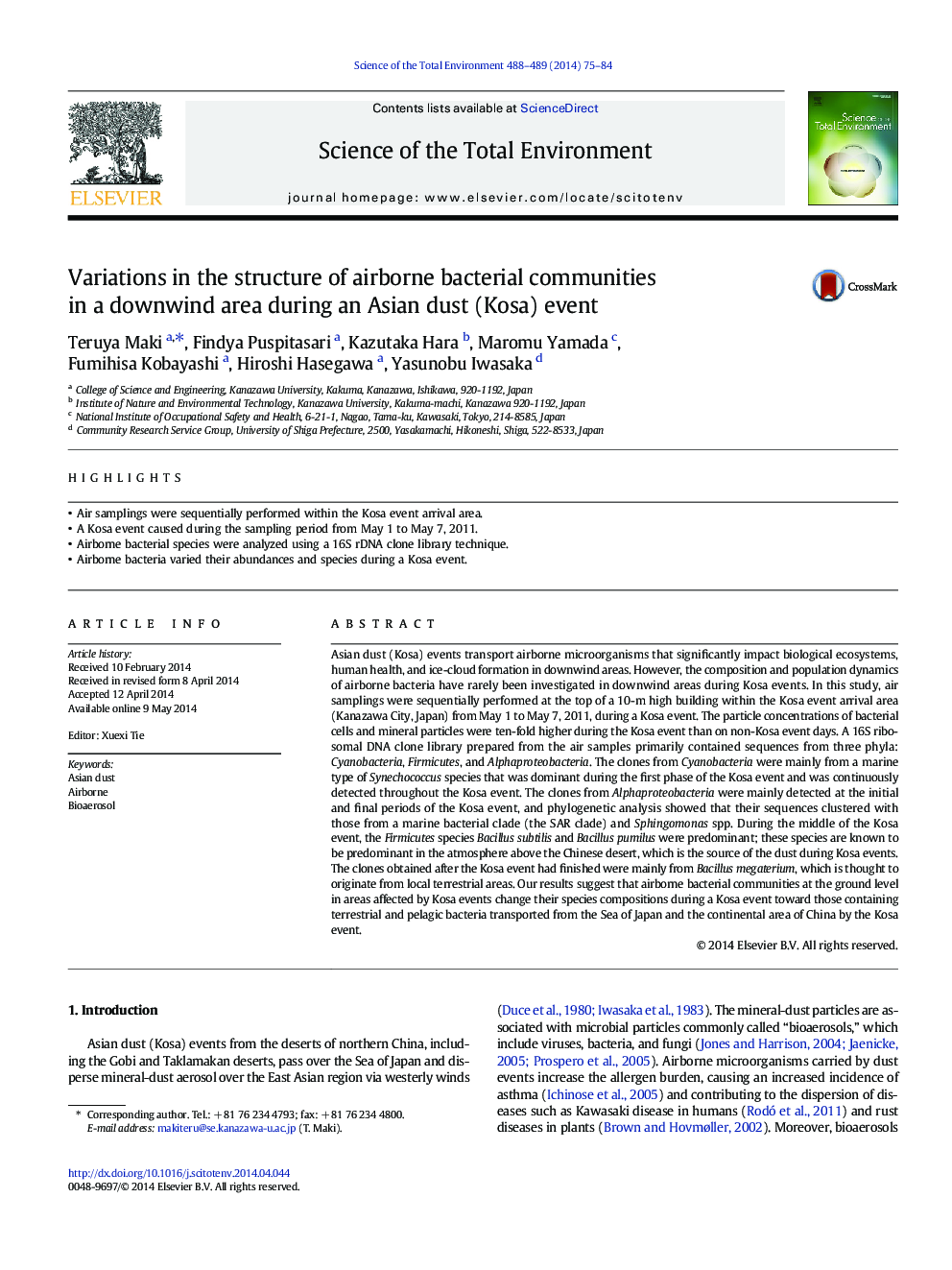| کد مقاله | کد نشریه | سال انتشار | مقاله انگلیسی | نسخه تمام متن |
|---|---|---|---|---|
| 6330136 | 1619781 | 2014 | 10 صفحه PDF | دانلود رایگان |

- Air samplings were sequentially performed within the Kosa event arrival area.
- A Kosa event caused during the sampling period from May 1 to May 7, 2011.
- Airborne bacterial species were analyzed using a 16S rDNA clone library technique.
- Airborne bacteria varied their abundances and species during a Kosa event.
Asian dust (Kosa) events transport airborne microorganisms that significantly impact biological ecosystems, human health, and ice-cloud formation in downwind areas. However, the composition and population dynamics of airborne bacteria have rarely been investigated in downwind areas during Kosa events. In this study, air samplings were sequentially performed at the top of a 10-m high building within the Kosa event arrival area (Kanazawa City, Japan) from May 1 to May 7, 2011, during a Kosa event. The particle concentrations of bacterial cells and mineral particles were ten-fold higher during the Kosa event than on non-Kosa event days. A 16S ribosomal DNA clone library prepared from the air samples primarily contained sequences from three phyla: Cyanobacteria, Firmicutes, and Alphaproteobacteria. The clones from Cyanobacteria were mainly from a marine type of Synechococcus species that was dominant during the first phase of the Kosa event and was continuously detected throughout the Kosa event. The clones from Alphaproteobacteria were mainly detected at the initial and final periods of the Kosa event, and phylogenetic analysis showed that their sequences clustered with those from a marine bacterial clade (the SAR clade) and Sphingomonas spp. During the middle of the Kosa event, the Firmicutes species Bacillus subtilis and Bacillus pumilus were predominant; these species are known to be predominant in the atmosphere above the Chinese desert, which is the source of the dust during Kosa events. The clones obtained after the Kosa event had finished were mainly from Bacillus megaterium, which is thought to originate from local terrestrial areas. Our results suggest that airborne bacterial communities at the ground level in areas affected by Kosa events change their species compositions during a Kosa event toward those containing terrestrial and pelagic bacteria transported from the Sea of Japan and the continental area of China by the Kosa event.
Journal: Science of The Total Environment - Volumes 488â489, 1 August 2014, Pages 75-84